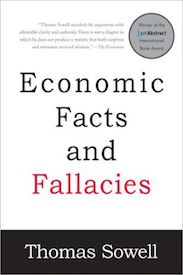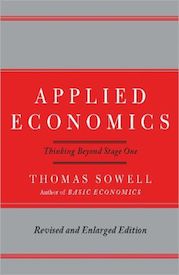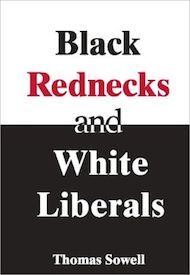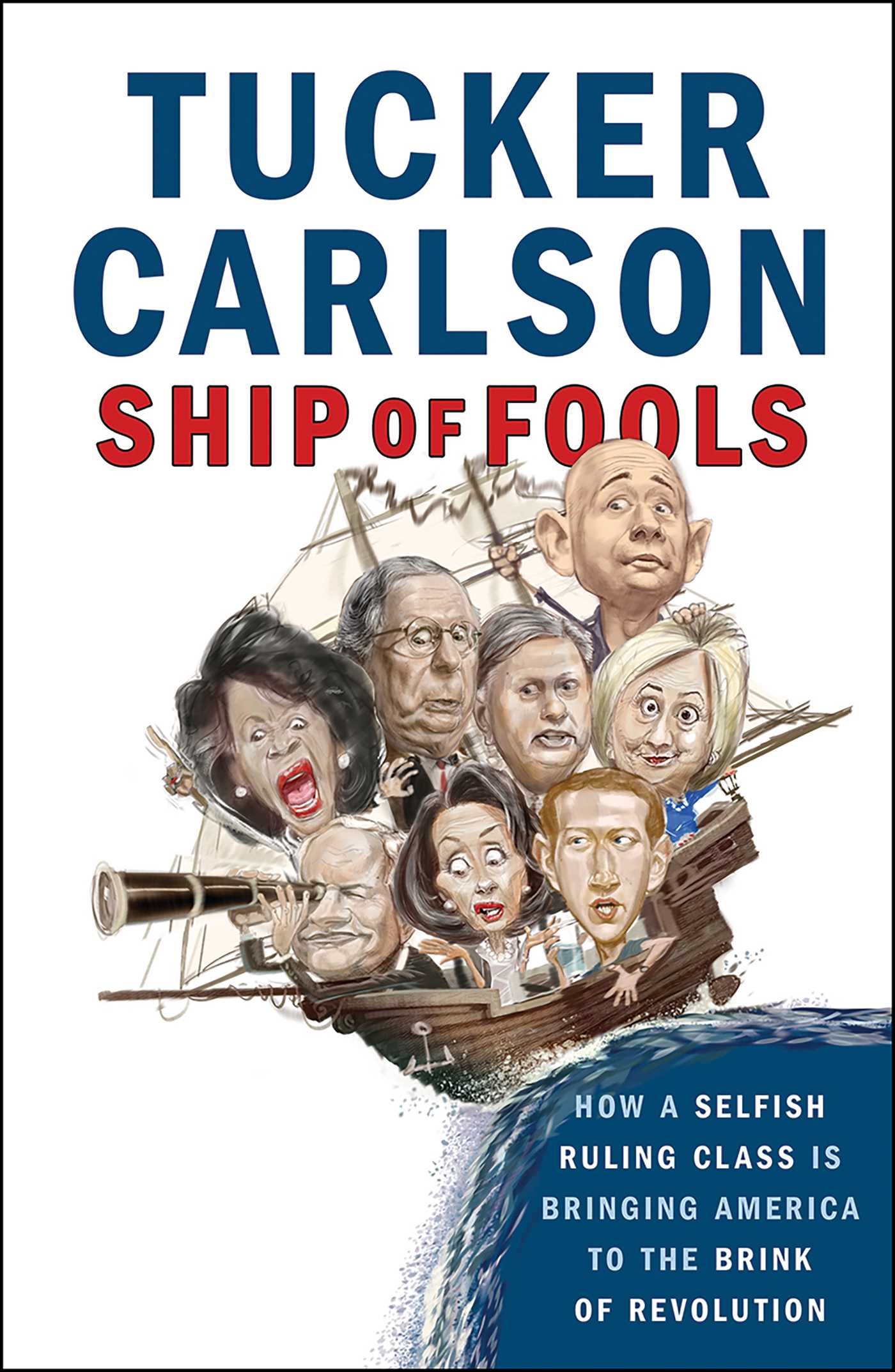Economic Facts and Fallacies
Using plain language that can be readily understood by people with no previous knowledge of economics, the renowned conservative economist Thomas Sowell in “Economic Facts and Fallacies” explains the key facts about economic issues that are all too often ignored by lazy politicians and a relentlessly Leftist media. Sowell puts the flesh of real issues on the bare bones of economic theory, explaining the economic facts behind issues including rising housing prices, the high cost of college, and numerous “income distribution” issues such as the high salaries of corporate CEOs and more.
Sowell, who has taught economics at Cornell, UCLA, Amherst and elsewhere, clearly explains all of this without resorting to incomprehensible economic terminology or the shallow liberal politicization that mars all too many expositions of economic issues. Explaining that “some things are believed because they are demonstrably true,” while other things are believed simply “because they are consistent with a widely held vision of the world — and this vision is accepted as a substitute for facts,” he doesn’t hesitate to expose some of the Left’s most cherished economic dogmas as the fallacies they are. He explodes the myth of male-female income disparities and the myth that public housing projects will reduce crime in poor neighborhoods, unlocks the secret of poverty in Third World countries, and much more.
Clear, concise, and reliably conservative, Thomas Sowell’s Economic Facts and Fallacies is a solid primer that exposes the Left’s vaunted economic theories as the castles in the sand that they really are.
Thomas Sowell explains in clear terms:
- How some very plain and straightforward facts about income and wealth have been obscured by fallacies based on vague and inconsistent words, garnished with misleading statistics
- Have the rich really been getting richer while the poor get poorer? Is the great American middle class really vanishing?
- Today’s economic disparities between the races: the extent to which they’re due to historical circumstances, and to contemporary trends and policies
- Why the protection of property rights is an absolutely indispensable prerequisite to prosperity for Third World countries
- How poor definition and inconsistent use of the terms “rich” and “poor” hampers the public debate on economic disparities today
- How gross income differences between groups can easily lead to fallacious conclusions if various demographic, educational and other differences are ignored
- Why “foreign aid” is a misleading term, presupposing that transfers will aid in economic development, despite all too many examples where continued massive transfers of wealth have accomplished nothing
- Why the fact that so many farmers are abandoning farming, and that so much agricultural land has been made available for building residential communities, ought to be decisive evidence against those who raise alarms about the dangers of “losing” farmland
- How the extraordinary protections and prerogatives enjoyed by faculty members at colleges today permit not only a great deal of self-indulgence, but also corruption
- How a rising standard of living is itself one of the factors behind reduced household size over time
- One of the principal and most misleading fallacies about slavery: that it was based on race
- The devastating results of the assumption among city planners and consultants that people must have their transportation and housing patterns regulated and controlled by “experts”
- How the replacement of human muscle by machine power and the growing importance of industries and occupations that are not dependent on either one have made sex differences and age differences no longer as significant in the workplace as they once were
- Salaries: the importance of regarding them not as retrospective rewards for merit but as prospective incentives for contributing to production
- How race is used as a sorting device for decision-making even by people who are not racists
- Why professors tend to focus on narrow subjects rather than broad analyses — to the detriment of educational quality
- Why employer discrimination is the most elusive of the many factors that affect male-female economic differences
- The major economic consequences of one principal difference between men and women: child-bearing
- What explains the high salaries of corporate CEOs, and the lucrative severance packages (“golden parachutes”) even for those who have clearly failed
- The huge incentive colleges and universities have for keeping tuition high enough to be unaffordable for large numbers of students
- At what places and times in history there really has been “affordable housing” — and what makes housing unaffordable at other times and places
- The inflationary bias of the consumer price index, and how it can be corrected
- The biggest — and often overlooked — fallacy about the history and economic development of racial and ethnic minorities
- Why faculty tenure is one of the main reasons why college tuition rates are so high
- How differences in the number of paychecks per household often get omitted from discussions of income “disparities” and “inequities” caused by “society”
- Does “overpopulation” really cause poverty? How there is no consistent relationship between population density and real income — and overpopulation doomsayers have yet to produce even a single example of a country that had a higher standard of living when its population was half of what it is today
- What explains the huge disparities in income between most prosperous nations and the most desperately poor nations of the Third World
- Why foreign aid has been helpful in some cases but not in others
“Economic Facts and Fallacies is the kind of book lesser lights would have labored for years to produce. Full of pithy and useful data, and imbued with the wisdom of a lifetime of economic analysis, this is another home run for the sage of Palo Alto.” — MONA CHAREN, syndicated columnist
- The Author

Thomas Sowell
Thomas Sowell is the Rose and Milton Friedman Senior Fellow on Public Policy at the Hoover Institution. His current research focuses […] More about Thomas Sowell.
- Books by the Author
- Related Articles
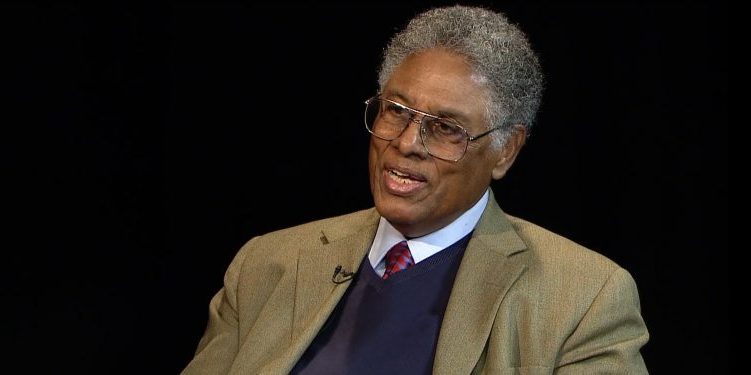
Episode #5 – Interview with the Legendary Thomas Sowell: His New Book, His Legacy, and What He Thinks of Trump and the Future of America
The legendary conservative economist Dr. Thomas Sowell sat down with us for an exclusive podcast author interview about his new book, Discrimination[...]
Thomas Sowell’s 5 Best Conservative Books
Thomas Sowell is one of America's best economic thinkers. For years, Thomas Sowell has tackled left-wing ideas, so we compiled[...]
Member of the Week: Isaac Woodward (Former John Jay Fellow)
Our featured CBC Member of the Week is Isaac Woodward - former John Jay Fellow at the John Jay Institute[...]
National Review Comes Out “Against Trump”
National Review, the flagship conservative magazine started by conservative icon William F. Buckley, Jr, has released their latest issue of […]
Ratings Details




